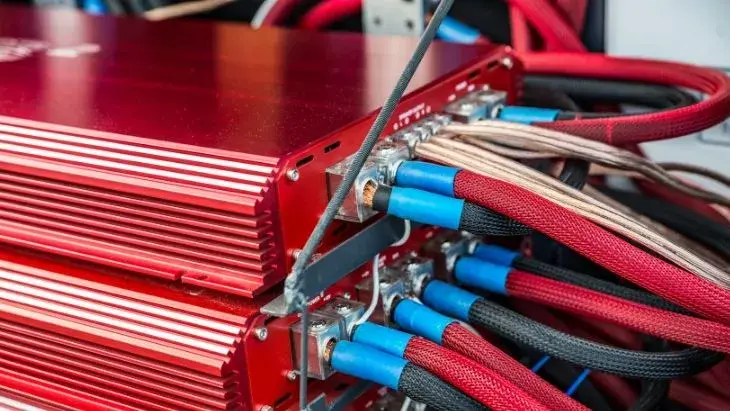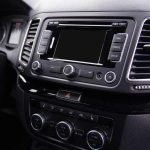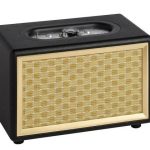An amplifier is designed to receive weak audio signals and amplify them to output stronger audio signals to drive speakers and subwoofers. If you have powerful speakers and subwoofers in your car, a factory radio or aftermarket receiver may not have sufficient power to drive them. That’s where a car amplifier comes in handy.
Essentially, an amplifier features several operation mechanisms. One of the key mechanisms in most reliable amps is protection mode. Protection mode is a feature that automatically shuts down an amplifier. It protects the amp and other components hooked to it from damage in case of a problem.
If your amp activates protection mode more often, you may get annoyed as you won’t enjoy your sound system smoothly. However, it might be a sign that there’s a problem with your car’s sound system. Thus, we recommend you start by checking the cause of the problem. In this article, we will discuss how to bypass protection mode on amp
Why Does My Amp Go Into Protection Mode?
In most cases, there is a problem with your amplifier or the components hooked to the amplifier if it goes into protection mode constantly. Thus, it will help to learn why your amp goes into protect mode more frequently than normal. Here are some reasons that may cause an amp to go into protection mode:
1. The amp is overheating
If you have installed a car amp in a tight space without proper air circulation, such as underneath a car seat, it is likely to overheat. Also, if the amp doesn’t have a well-built cooling mechanism, then it is likely to shut down due to overheating. In this case, it shuts down to protect internal components from melting and burning out due to excessive heat.
2. Internal failure
If the amp is facing internal failures, it is likely to go into protection mode. For instance, a faulty transistor, blown fuse, defective rectifier, or blown transformer wiring can cause the amplifier to shut down.
3. Load mismatch
Essentially, amps and subwoofers vary in terms of their load capacities. If you hook a subwoofer with a lower impedance to an amp with a higher impedance, the amp will struggle with the load. Hence, it will go into protection mode. In this case, you might notice that the amp is shutting down when playing heavy bass music at high volume due to the load mismatch.
4. Faulty receiver or speaker
Another reason why your amp may go into protect mode is a faulty component attached to the amp such as a speaker or receiver. For instance, a shorting speaker wire or a faulty head unit can cause the amp to go into protect mode to protect itself from damage.
Getting Your Amp out of Protection Mode
If your amp is constantly switching to protection mode, start with checking all the components hooked to the amplifier. Here is how to get the amp out of protection mode.
Tip 1- Check the Amp Temperature
You can touch the amp carefully to check whether it’s too hot. In case you feel it’s too hot, then it’s overheating. There are several reasons why it can overheat including poor airflow, blown speakers, shorting speaker wire, or load mismatch. If possible, place the amp in an area where it is properly ventilated and check whether the problem stops.
Tip 2- Disconnect the Speakers
The next fix you should try is to disconnect all the speakers hooked to the amplifier. Simply unplug the speaker wires from the speaker ports on the amp. Only keep the remote leads, grounding, and power connected to the amp. Once done, turn on the amp. If it stays on without shutting down, then one of the speakers is blown.
In this case, check the condition of each speaker. If a speaker is grounded to a metallic part of your car or it is blown, the amp will go into protect mode. You can use a millimeter to test the speakers. If the engine is turned on and the speaker is showing a voltage lower than 12V, then it’s likely blown.
Tip 3- Unplug the Head Unit
Another fix is to unplug the head unit from the amplifier. If you disconnect it and the amp turns on without shutting down, it means the head unit is faulty and needs further diagnosis.
Tip 4- Inspect the Cables
All the cables hooked between the amp and other components should be inspected. Ensure the cables are tightly connected. A loose cable can cause the amp to go into protection mode. Also, ensure any shorted cable is fixed or replaced. You should also replace any corroded cable.
Tip 5- Reset the Amplifier Gain
If the gain on the amp is not well set, it might cause distortion or damage the speaker. As a result, the amp will be prompted to shut down. Ensure the gain is set in a way that the sound production is clear without distortion. If you adjust it and the problem stops, then you have found the culprit and the fix.
Tip 6- Assess the Load Impedance
As discussed earlier, a mismatch in load impedance can make the amp to shut down. Check whether the impedance of the amp and the speakers or subwoofers match. For instance, if the load is 2 ohms and the amp capacity is 4 ohms, the amp will struggle to match the impedance. As a result, it’ll overheat and go into protection mode. Thus, ensure the amp can safely handle the total load.
Tip 7- Check the Grounding
Poor grounding can cause power issues. Clean any oily or dirty grounding point. Also, scrub any rusted grounding point. Ensure any loose grounding is tightened. If that fixes the problem, then you’re good to go.
Tip 8- Check Your Amp
If the aforementioned fixes fail, then it’s likely your amp has an internal issue. Check whether the fuse is faulty. Replace any blown fuse. Also, if the fuse clips are melted, replace them and check whether the problem is resolved.
Conclusion
If you’re looking for a way on how to bypass protection mode on amp, just know it’s not advisable to do so. There is no way to do it since the amp is designed that way as a means of protecting itself from further damage. What you should do is to find the problem and fix it. If you bypass the protection mode, your amplifier may get damaged. Thus, you should fix the cause of the problem. Once you fix the problem, your amp will no longer go into protection mode. You will enjoy prolonged play times without any shut down.
Michael Evanchuk is a San Francisco-based sound engineer with 20 years’ experience installing, troubleshooting, and repairing commercial, automotive, and household sound equipment. Evanchuk owns an auto stereo center, where he offers highly competitive car audio installation and repair services. He has written dozens of articles on different sound engineering topics, all of which have been published in leading journals, blogs, and websites.





